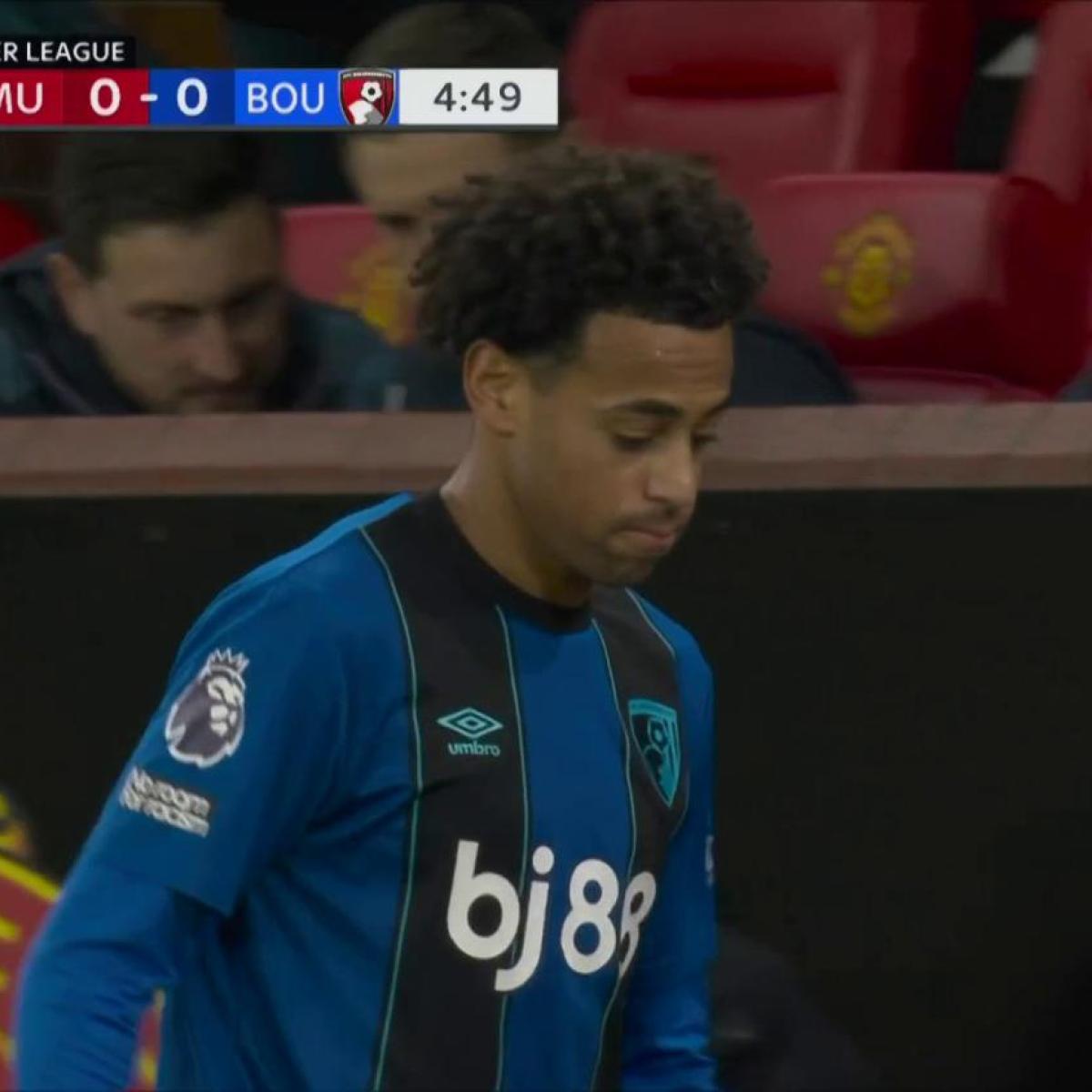Pelé.
The mere mention of the name conjures grainy, black-and-white footage of a bright-eyed young man announcing his arrival on the world stage in Sweden. Of a triumphant, shirtless star carried off the pitch at the Azteca. Of a smiling veteran bringing the beautiful game to a new audience. Of a septuagenarian snacking on a Subway sandwich with swimming stud Michael Phelps.
Of the greatest footballer to ever walk the earth.
Pelé.
No four letters better encapsulate the grace and splendor of the beautiful game. No athlete’s name is more closely associated to his or her sport.
Pelé isn’t the greatest soccer player of all time simply because he scored great goals and won a lot of trophies. Pelé is the greatest of all time because of his role as a football ambassador who changed the way the world — especially the United States — viewed soccer.
The first Black global superstar athlete, Pelé transcended race, borders and politics to bring the world’s game to the U.S., creating a fervor never seen before and rarely seen since. In just three years, Pelé’s impact on soccer in the U.S. cannot be understated — the Brazilian completely changed how Americans view the sport, turning it from a foreign oddity to a potential pastime, setting the stage for the current soccer culture in the States.
On Thursday, Dec. 29, Pelé died at the age of 82 after being in and out of hospital in recent months after a tumor was found on his colon.
Pelé’s Legacy In U.S.
For most of his career, Pelé was a Brazilian star playing in Brazil. Scoring at nearly a goal-per-game rate for Santos, the forward helped Brazil win three World Cups, the only player to accomplish the feat. In 1970, after leading the Seleção over Italy in one of the most dominant performances in World Cup Final history at the Azteca, Pelé was named the most famous person in the world.
Outside of the occasional tour through Europe with Santos, the only time the world saw Pelé play was at the World Cup. That changed in 1975 when Pelé eschewed offers from European clubs to join the New York Cosmos of the nascent North American Soccer League, an earthshattering event akin to the Beatles coming to the States for the first time.
The NASL had been around for seven years before Pelé arrived. It was a middling league with middling attendance, comparable to the current NWSL. Pelé turned it into the NFL.
Pelé revolutionized soccer in America.
Coming To America
In 1966, NBC aired the BBC broadcast of the World Cup final between England and West Germany. Though played on a two-hour delay, it marked the first time soccer was shown on U.S. televisions as a stand-alone broadcast. The next year, the North American Soccer League was founded.
By 1970, the first World Cup in color came to ABC’s Wide World of Sports, Pelé winning his third World Cup in Brazil’s now-customary canary yellow, the nation’s first introduction into this wizard of the pitch. Soccer was still a curiosity in the U.S., but it had entered the nation’s consciousness.
In the NASL’s first seven seasons, average attendance was struggling. From 4,699 in the first season to 2,930 in the second, by 1974 the 7,770 average attendance across the league must’ve felt like a true sign things were trending upward. Little did the league know the New York Cosmos were looking to completely change the game.
Pelé had retired from the national team and his hometown club Santos; suitors from around the globe inquired as to whether the 34-year-old would play outside of Brazil for the first time. Despite interest from top European clubs, the New York Cosmos, barely known at the time even in the soccer world, secured his services.
The story of how the Cosmos signed Pelé is one for an entire article itself. The documentary “Once In A Lifetime” brilliantly discusses the events, which included Henry Kissinger, the Secretary of State and National Security Advisor at the time, helping convince the Brazilian government to let Pelé come to America. Absurd amounts of schmoozing and effort finally paid off, with Pelé agreeing to join the club in 1975, halfway through the season, on a 2.5-year deal through the 1977 season. He immediately became the highest-paid athlete in the U.S. at $1.4 million, easily surpassing Hank Aaron’s $200,000 salary.
When Pelé arrived, he was met by a voracious press, one that had previously all but ignored the Cosmos, except when goalkeeper Shep Messing decided to pose nude in a magazine. Overnight, mainstream America was interested in the world’s game.
For Pelé’s NASL debut, the poor grounds crew spray painted the dirt at the Cosmos’ stadium green to make it look like grass for the CBS broadcast. Pelé came through with a goal and an assist in a 2-2 draw against the Dallas Tornado, and the league’s profile skyrocketed.
Pelé completely changed the game. By 1976, leaguewide attendance averaged more than 10,000 fans per game for the first time. In 1977, the Cosmos averaged 34,142 fans per game, more than double the pre-Pelé high.
Buzz around the NASL trumped everything the league had experienced prior. There had been foreign players before, but this was different. Clubs around the league began spending more money on foreign stars who were attracted to the idea of going up against Pelé and seeing what this American soccer league was all about.
The Los Angeles Aztecs brought star George Best over from Manchester United, then convinced Dutch icon Johan Cruyff to join. England stars were a popular item, with Seattle signing 1966 World Cup final hero Geoff Hurst, Fort Lauderdale nabbing goalkeeping legend Gordon Banks and England captain Bobby Moore playing for San Antonio and Seattle. The Cosmos added Brazil captain Carlos Alberto, bombastic Italian striker Giorgio Chinaglia and Germany’s Der Kaiser, Franz Beckenbauer.
The spending ultimately was not prudent, but it produced a few years of some of the best soccer America had ever seen.
Pelé Party
The Cosmos were a draw everywhere they went. Soccer tailgating became commonplace as casual fans across the country wanted to join in on the party.
And what a party it was.
While Pelé was scoring at a prolific rate on the pitch, he was scoring off it too. The Cosmos were the hottest thing in New York, which means they were invited to the best parties in New York, where Pelé, bombastic Italian striker Giorgio Chinaglia and Cosmos founder/owner Steve Ross cavorted with the Big Apple’s most attractive people.
Writer David Hirshey, who broke the story of Pelé coming to America and was writing a book on the Brazilian icon, once spotted Pelé out with a blonde woman on each arm. Pelé told Hirshey: “Not for the book.” So well-known were the proclivities of Pelé and Chinaglia, that the Tampa Bay Rowdies used it against the Cosmos. Before a 1976 playoff game, the Rowdies sent women to the rooms of Pelé and Chinaglia; the next day the Tampa Bay scored a 3-1 win over the Cosmos.
In the 1977 Division Championships, an NASL record 77,691 fans showed up to Giants Stadium, completed just a year earlier, to watch the Cosmos beat Gordon Banks and the Fort Lauderdale Strikers 8-3. The team drew more than 73,000 showed up a week later for a 4-1 win over the Rochester Lancers in the Conference Championships to send the Cosmos to the Soccer Bowl.
“This is a breakthrough for the NASL,” commissioner Steve Woosnam said at the time. “This isn’t Giants Stadium tonight; it’s Cosmos Stadium.”
Pelé walked off a champion after winning the Soccer Bowl 2-1 over the Seattle Sounders in front of 35,548 fans in Portland. For a bit of comparison, the last year the MLS Cup was played at a neutral site, 21,700 showed up for the Rapids’ win over FC Dallas.
Post Pelé
Pelé retired after one more game in a Cosmos uniform, a friendly between the NASL giant and his former club Santos. He scored, of course, and the match was attended by everyone from Muhammad Ali to Bobby Moore.
The Cosmos continued to draw huge crowds, even after Pelé’s retirement. New York’s attendance peaked in 1978 with an average of 47,856 fans even without Pelé. Average attendance across the NASL continued to rise as well, peaking at 14,440 in 1980. In comparison, MLS averaged 21,310 fans per game in 2019 while the NWSL averaged 7,337 (we’re using the last full non-pandemic seasons). Soccer wasn’t challenging baseball and basketball in popularity, but it had carved out a niche.
The problem for soccer in America was not in the stands but on TV. In 1979, ABC went all in on the NASL, nationally televising nine matches. That’s comparable to the 2021 MLS season in which 12 games were on national TV.
The ratings tanked and by 1982 no games were nationally televised.
Eventually, the NASL became financially unstable. Clubs were spending too much on global stars and not drawing enough fans to keep afloat. After the U.S. tried and failed to get the 1986 World Cup hosting rights from Colombia (it instead went to Mexico, which had hosted just 16 years earlier), the NASL dissolved in 1985.
But the soccer seeds had been sewn in the U.S.
Pelé’s Lasting Impact
In many ways, Pelé’s NASL was a precursor to modern football. The Cosmos started an arms race in which clubs signed players from all over the world.
Franz Beckenbauer, who played five seasons for the Cosmos, spoke of winning the World Cup with all Germans, a European Cup with most Germans and the Soccer Bowl with players from 14 different countries. Now, Champions League-winning teams are similarly made up of players from a dozen or more nations.
When Beckenbauer first arrived in the States in 1977, a group of young soccer players met him at the airport. One of those kids, Mike Windischmann, went on to captain the USMNT at the 1990 World Cup, the first for the U.S. since 1950, providing a clear link between the NASL’s cultural impact and the USMNT’s renewed success on the world stage. (Coincidentally, Beckenbauer won that tournament as West Germany’s coach.)
The U.S. finally got the chance to host the World Cup in 1994 and Major League Soccer followed with its inaugural season in 1996. MLS is now eighth in the world in highest average attendance for a soccer league. The U.S. men’s and women’s national teams regularly qualify for the World Cup — the women usually win it — and youth soccer is more than just a thing you sign your kids up to make them tired enough to go to bed at night. Nearly three million youth soccer players are registered every year.
While TV ratings are still a struggle for MLS, international games and European matches regularly draw big audiences. The 2022 Champions League final set a U.S., English-language record with an average 2.761 million viewers on CBS, with an additional 2.6 million watching in Spanish on Univision/TUDN.
Soccer is here to stay in America, and Pelé helped make it happen.




